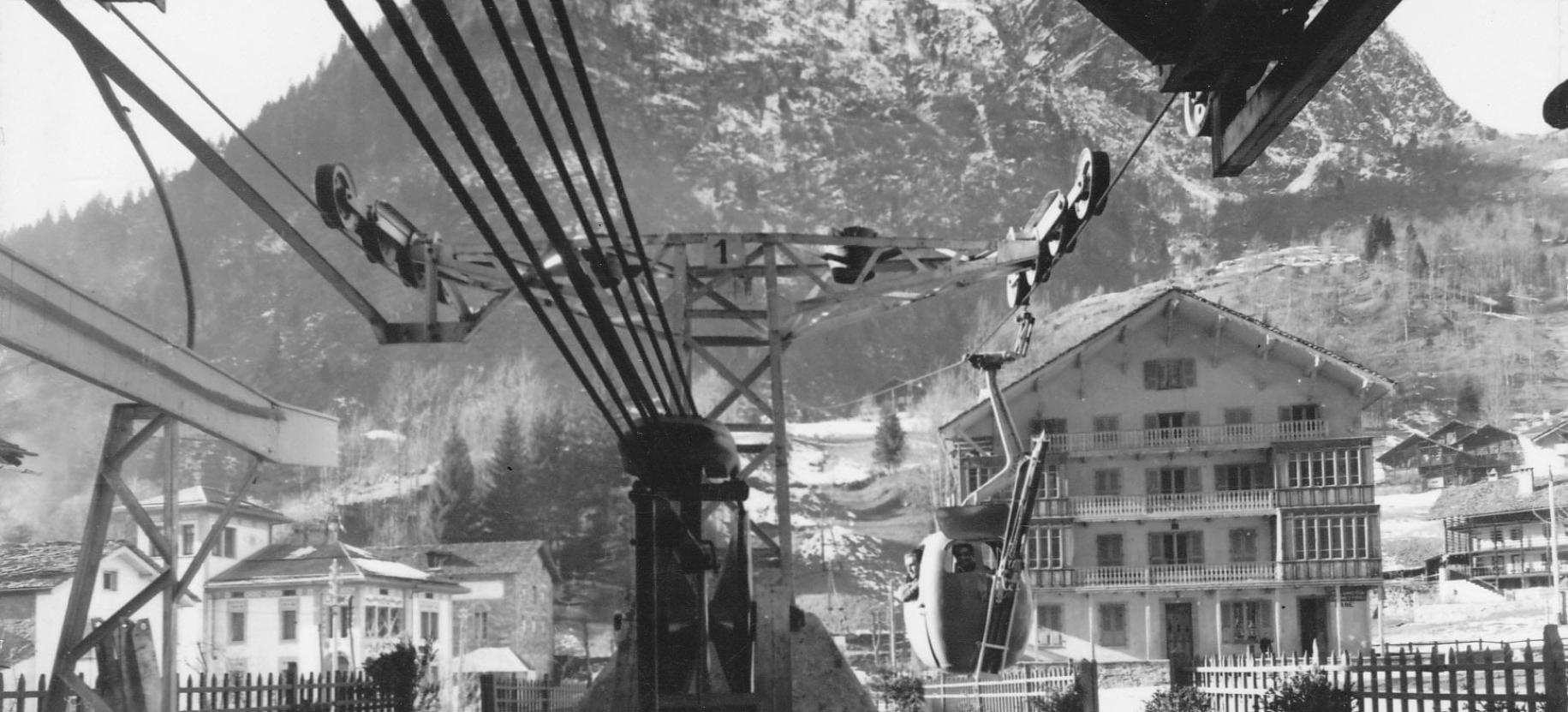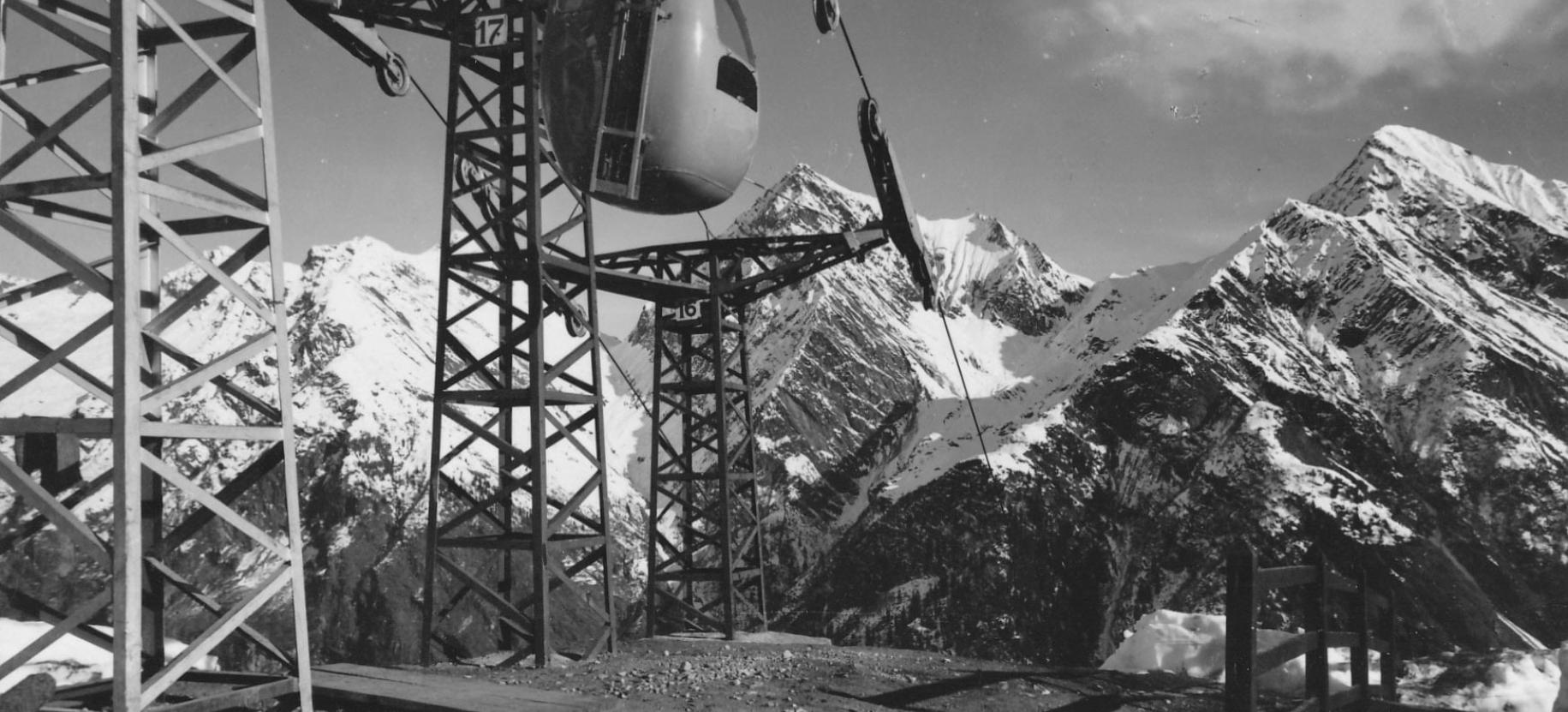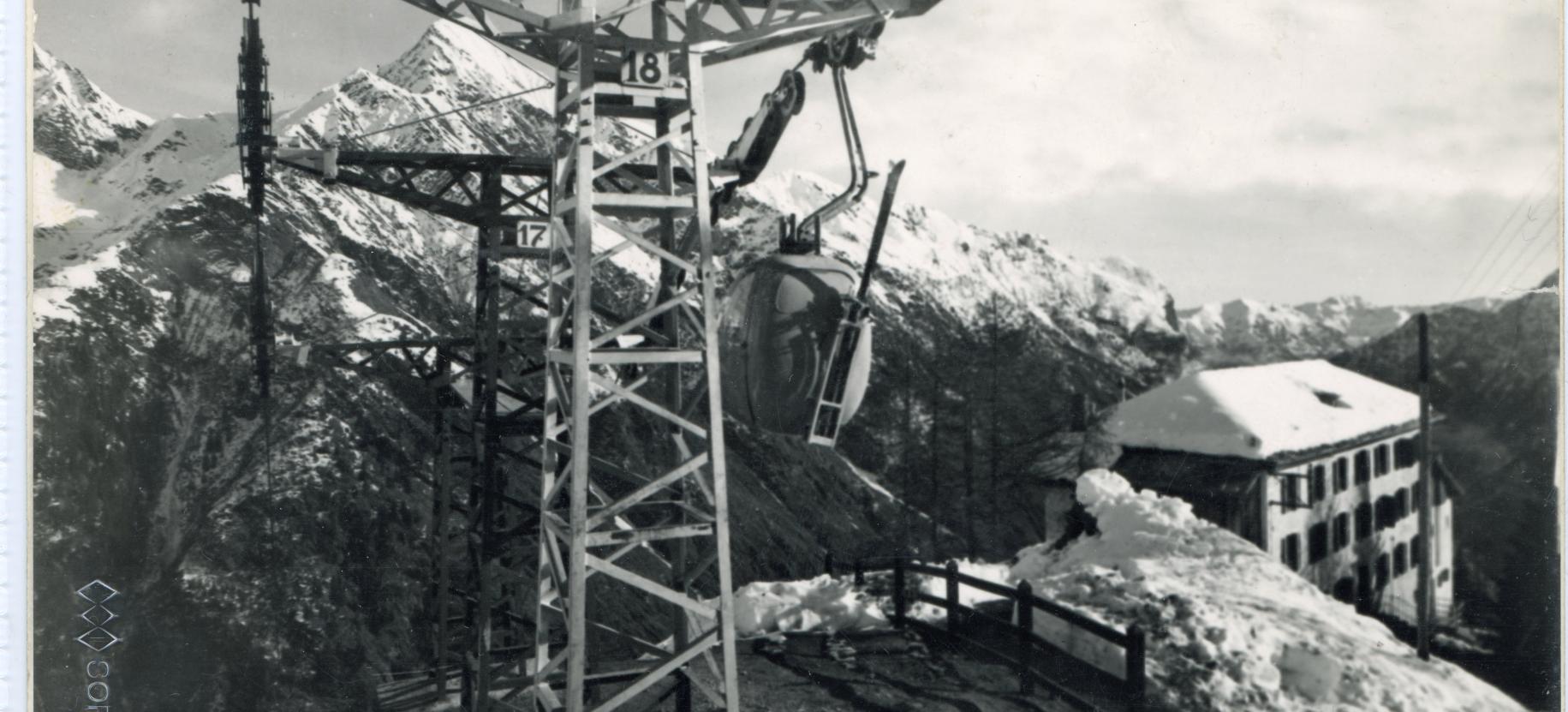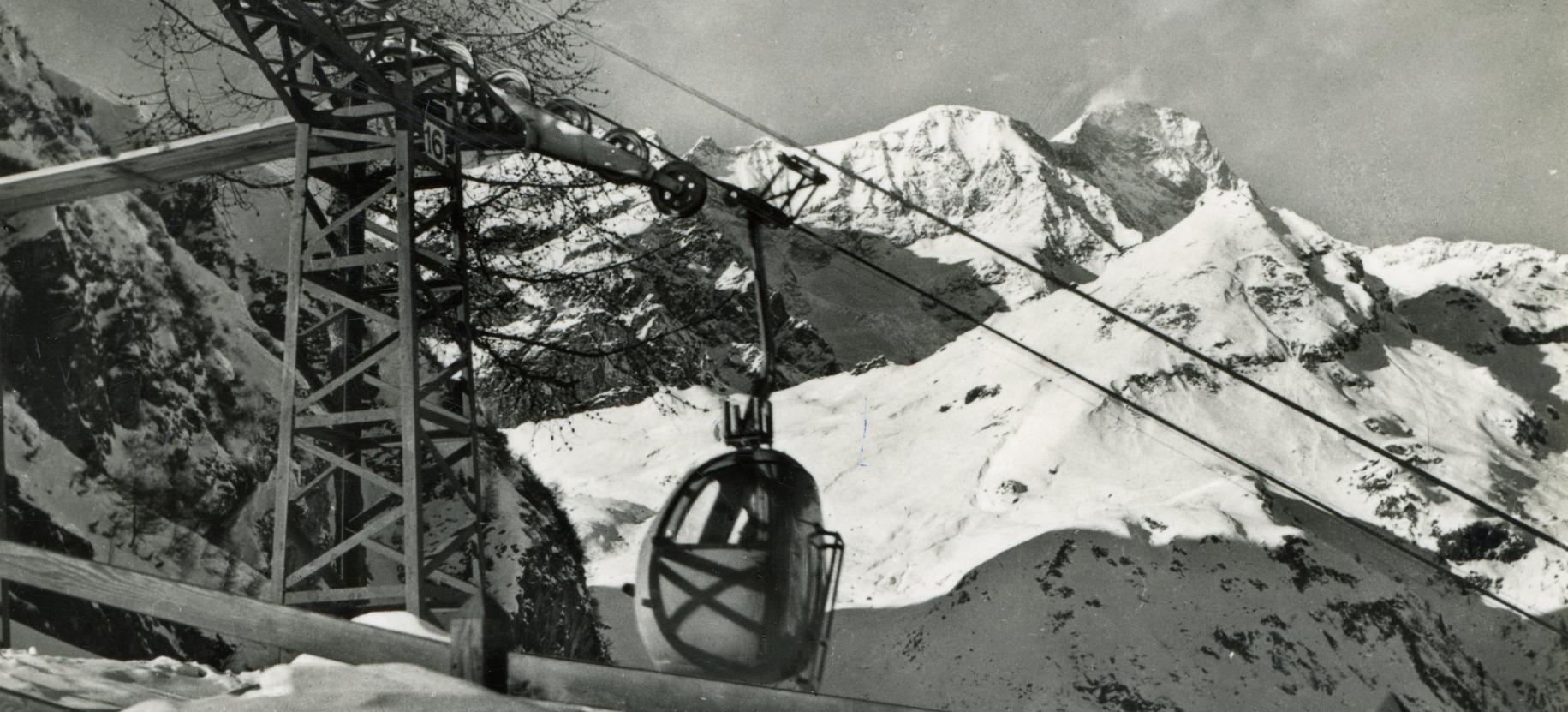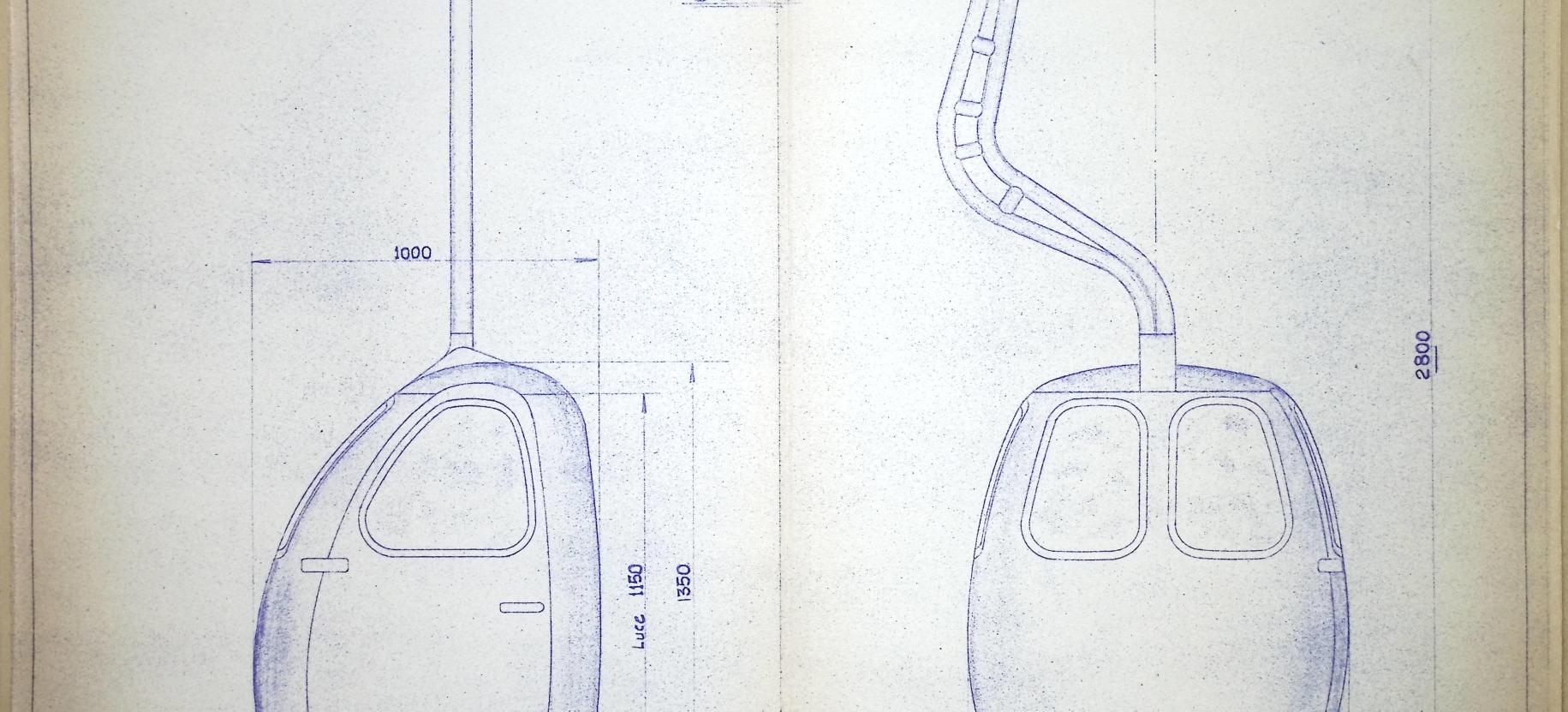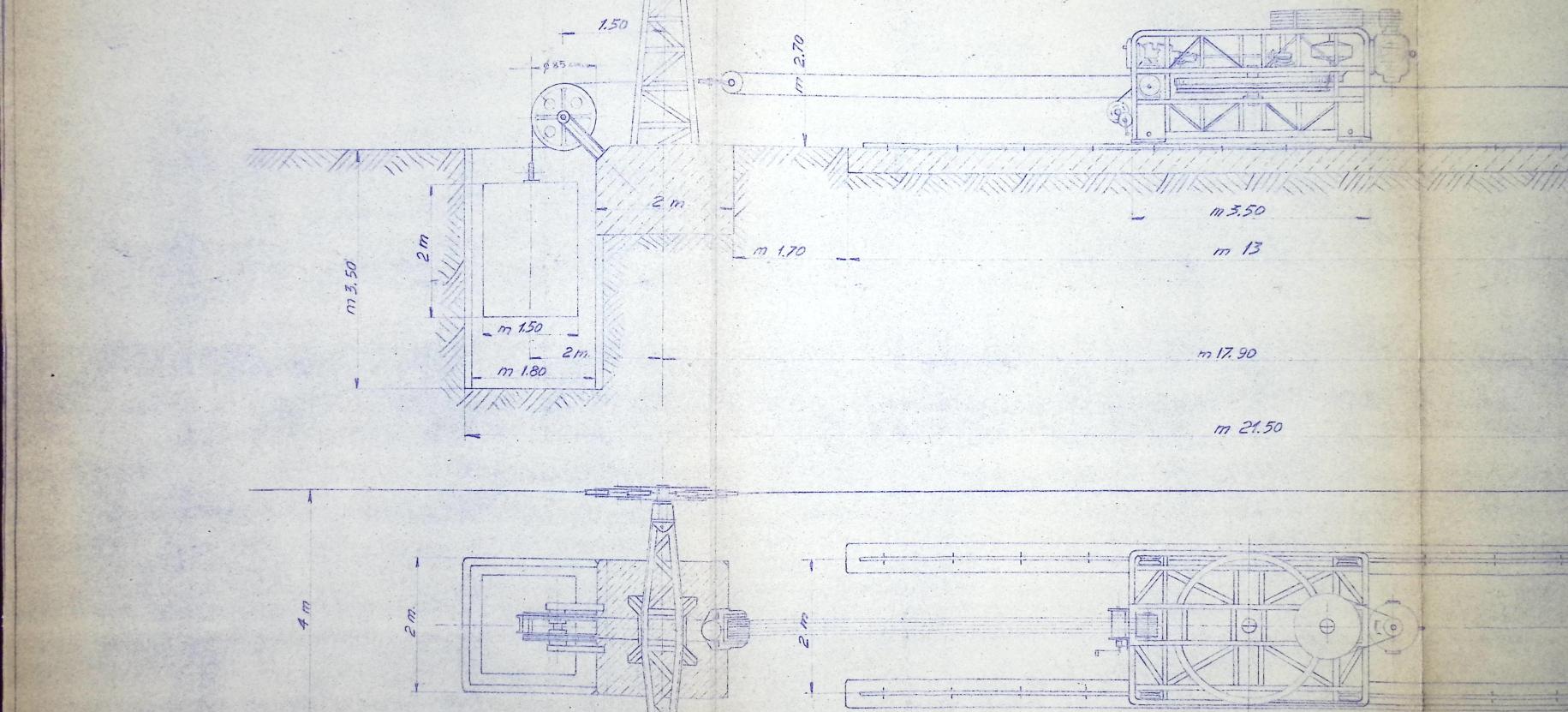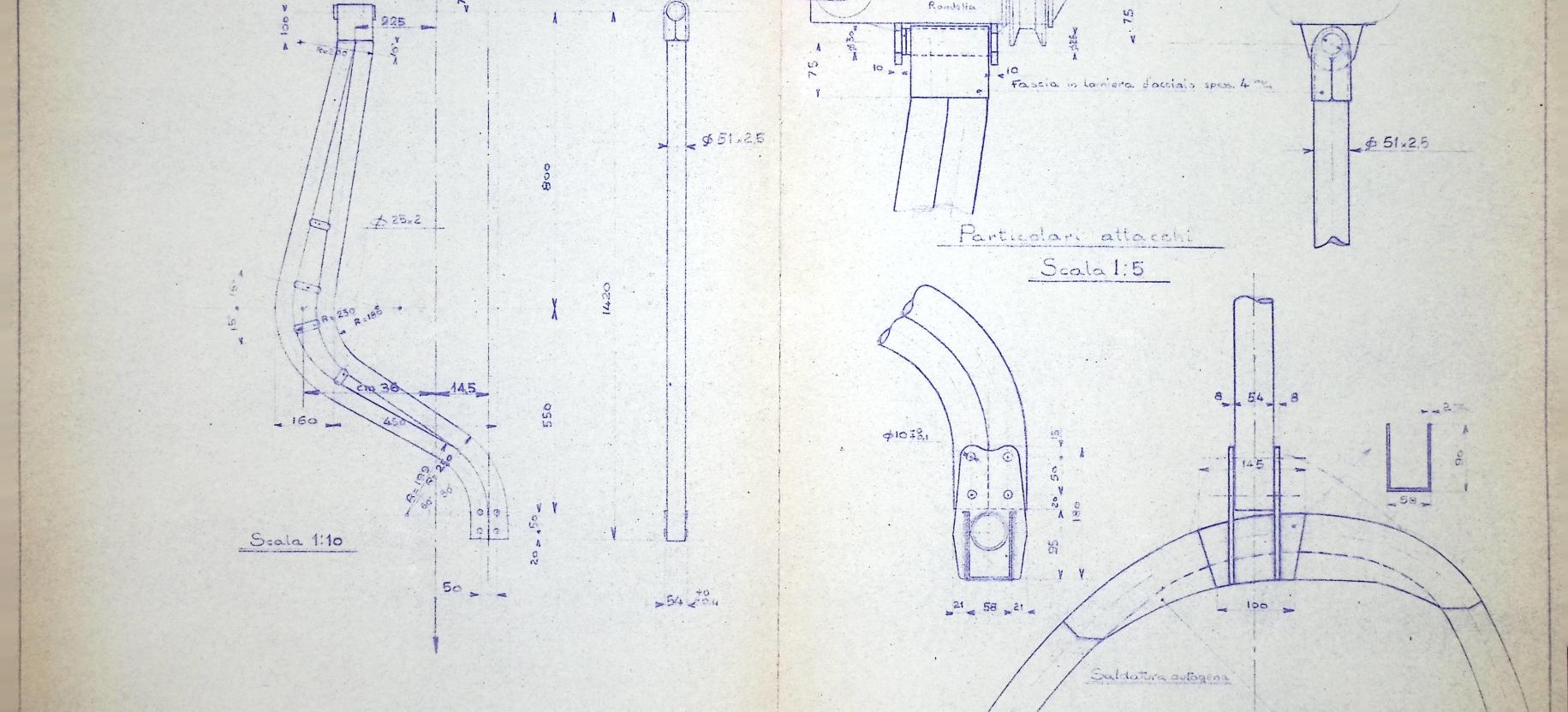It was the 1950s and the long-standing desire to reach Monte Rosa from Alagna materialized in the construction of the first lift, connecting the center of the village to the Belvedere di Otro at an altitude of 1.890 meters above sea level. The Belvedere Hotel was located up there. It was built in the early twentieth century but until the lift was completed, it only opened in summer, operating as a first stop on the way up to Capanna Regina Margherita from Alagna.
Ropelines. Cableway Alagna-Belvedere
The first step of a dream, the first signs of a transformation
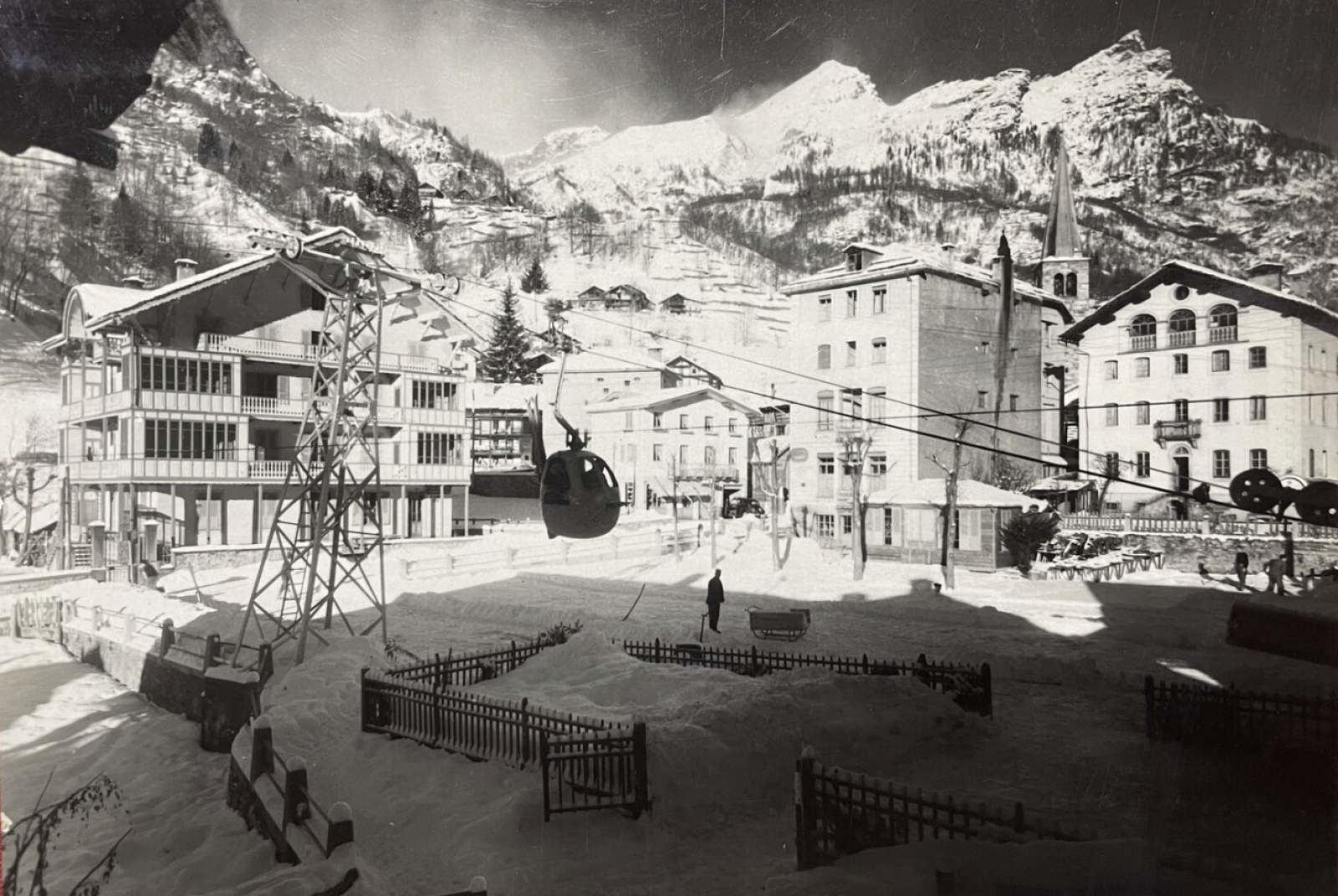
The story
Designed and built by the Carlevaro and Savio Company, the Alagna-Belvedere cableway was the first automatic coupling system in Italy. Born as an experimental lift, it began operating in 1952 after a series of transformations indicated by the supervisory authority. Its characteristic red, yellow and green egg-shaped cabins are iconic elements that still live today in our memories and are visible in some vintage postcards. The most famous immortalize them in their departure from the town square of Alagna.
A driving force behind nascent and prosperous tourism, this cable car was the first sign of a series of innovations, transformations and developments that would mark the improvement of Alagna as a touristic destination.
Four ski lifts were built around the cable car, thus making the little village of Otro into the first ski resort in Alagna. From the arrival station of the cable car, a single-seater chairlift was installed to connect the hamlet of Feglierc with Belvedere. Two ski lifts were built up towards Torru and towards Suna respectively and a cableway which went up in the direction of Scarpia shortly after the hamlet of Follu.
It was then natural the development of activities and the birth of collateral initiatives which contributed to further qualifying the offer of the destination. Thus a ski rental shop opened, the first ski school was founded, new slope layouts were created and the grooming of the ski slopes was carried out by the first snowcat - before the local boys with skis on their feet did it and a free day was given in change of their service.
Therefore, the entire country became aware of the importance of the winter season as an economic activity to develop and focus on in response to the search for airiness and joy that was strongly emerging in the post-war period.
New slopes were designed and prepared (the one named Biel descended from Belvedere in the direction of Follu, the Seghi one was dedicated to the Olympic champion Celina Seghi and the Dagardo in the direction of Feglierec). At the same time the existing ski slopes were enlarged with the collaboration of specialized technicians, to create modern tracks and making skiing in the resort funny and pleasant.
These were certainly the first steps into a tourism development oriented towards innovation and improvement, increasingly ready to welcome a wider and more varied public both in summer and winter seasons.
In this context of social and economic growth, took shape the dream of the visionary and far-sighted Milanese entrepreneur Rolandi. The construction of the Alagna-Bocchetta-Punta Indren lift launched the second phase of development of the destination.
And while this second phase led Alagna towards new perspectives, the Alagna-Belvedere cableway ended its life after a tragic accident on August 1, 1971.
Technical and commercial features
Constructor: Carlevaro e Savio
Year of construction: 1949
First operating in: 1951
Horizontal lenght: m/s 1.160
Drop: m 655
Operating speed: m/s 4
Maximum flow: people/hour 137
Number of trestels in line: 14
Innovative features
It was the first lift in Italy using an automatic coupling system.
The technical peculiarity of the Alagna – Belvedere cableway is identified in the type of lift and its design specifications. It was the first automatic coupling lift built in Italy.
Designed by the Company Carlevaro e Savio, based in Turin, this type of lift was then used by the Companies Piemonte Funivie (Italy), Agudio - in the construction of a lift in Switzerland - and Cables & Monorails Mancini (France).


